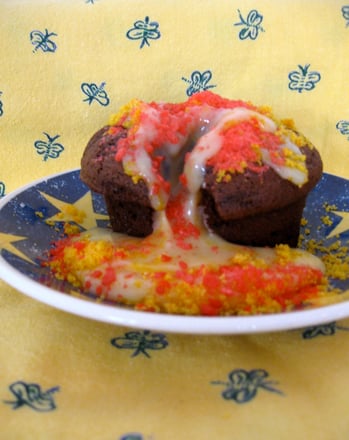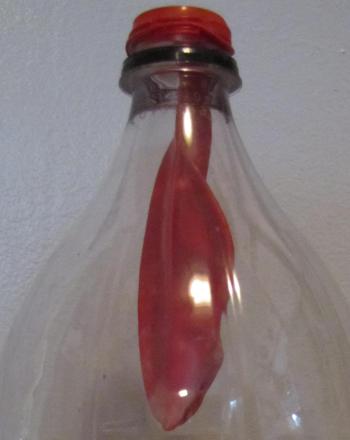Science project
Baking Soda and Vinegar Balloon
By now, you've probably heard of the explosive reaction that occurs when you mix baking soda and vinegar. That's old news. However, do you know what happens when you add a balloon to the mix? Discover more about chemical reactions with this fun and surprising science experiment.
Problem:
Can you blow up a balloon with the reaction between baking soda and vinegar?
Materials:
- 2 water bottles
- 8 ounces white vinegar
- 4 tablespoons baking soda
- Bowl
- Ice water
- 2 balloons
- Permanent marker
- Small funnel
- Timer
Procedure:
- Mark your two balloons with permanent marker: "1" for room temperature, "2" for ice bath.
- Mark the water bottles the same way: "1" for room temperature, "2" for ice bath.
- Use the small funnel to put 2 tablespoons of baking soda in each balloon.
- Clean the funnel well with running water, then dry it.
- Use the small funnel to put 4 ounces of white vinegar in each water bottle.
- Place Bottle 2 in the bowl of ice.
- After three minutes place the balloon on top of the bottles, being careful not to spill the baking soda into the bottles yet.
- Set your timer.
- Tip both balloons upwards to drop the baking soda into the vinegar.
- Record your results.
Results:
Baking soda and vinegar should have been able to blow up the ballon every time. However, you should have observed that the balloon at room temperature blew up significantly faster than the cold balloon.
Why?
When vinegar and baking soda mix, they create the gas carbon dioxide and water. The carbon dioxide has no where to go, but into the balloon - blowing it up. But you should have found that the balloon at room temperature may have been slightly faster in blowing up your balloon. This is because the colder temperature causes the reaction to take place more slowly, releasing the gas less effectively.
With science, the learning never stops; you can always change an experiment a little bit and get a completely different result! What if you used hot water instead of an ice bath? What if you used lemon juice instead of vinegar? What if you changed the size of the balloons? Whatever you do, make sure you only make one change at a time and leave all other factors the same...then conduct your experiment and record your results!
Education.com provides the Science Fair Project Ideas for informational purposes only. Education.com does not make any guarantee or representation regarding the Science Fair Project Ideas and is not responsible or liable for any loss or damage, directly or indirectly, caused by your use of such information. By accessing the Science Fair Project Ideas, you waive and renounce any claims against Education.com that arise thereof. In addition, your access to Education.com's website and Science Fair Project Ideas is covered by Education.com's Privacy Policy and site Terms of Use, which include limitations on Education.com's liability.
Warning is hereby given that not all Project Ideas are appropriate for all individuals or in all circumstances. Implementation of any Science Project Idea should be undertaken only in appropriate settings and with appropriate parental or other supervision. Reading and following the safety precautions of all materials used in a project is the sole responsibility of each individual. For further information, consult your state's handbook of Science Safety.













